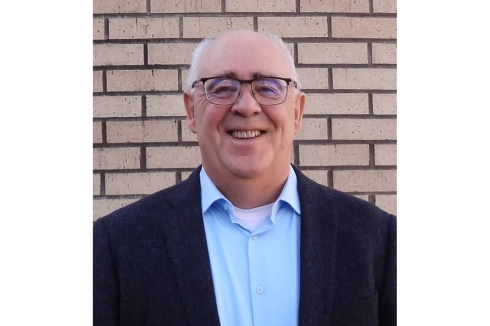WILLMAR — Research by Benjamin Winchester with the University of Minnesota Extension has changed the narrative about rural Minnesota by opening eyes to the reality that rural communities are not dying — and are in fact are benefiting from what he termed the “brain gain.”
People ages 30 and over are moving to rural communities for the more desired pace of life, security and affordable housing they offer.
ADVERTISEMENT
Winchester hopes his most recent research will change how people talk about housing in rural areas.
The narrative today is all about a shortage of workforce housing.
“My argument is you have no workforce housing shortage,” Winchester told an audience Sept. 5 at the Willmar Public Library in Willmar, Minnesota. “It is currently occupied by an older population.”
The rural sociologist with the University’s Center for Community Vitality spoke to kick off the new season of “hot topics” hosted by the Willmar Area League of Women Voters.
Typically, housing is made available for those early in their working careers by senior citizens leaving their homes. The expected “churn” of housing has not happened: Baby boomers are staying in their homes longer than previous generations; most intend to remain in their homes until they die.
In Kandiyohi County, 77% of those 65 and older remain in their own homes, as compared to 63% in 1996, according to data provided by Winchester.
“Our churn of housing has been slowed, and in fact is inhibiting our ability now to grow our economy at this point,” he said.
ADVERTISEMENT
He termed the practice of seniors remaining longer in their homes as a “policy of best intentions,” and added this warning: It is not realistic, and comes with a cost to the larger community.
Many are staying in their homes longer in part due to public policies and programs that help them do so. Yet when they do stay put, many seniors find that they lack the financial resources to maintain the houses or build equity.
This, in turn, risks more homes becoming dilapidated and lost from the housing stock in communities as age and health problems — or death — inevitably force the occupants out.
Many baby boomers continue to maintain the homes in which they raised their families and do not want to move into assisted living or nursing facilities, Winchester explained. They might be encouraged to “move on” if there were more options such as patio homes that would serve as transition housing, allowing them to remain independent.
Winchester pointed out that a clear warning about the challenge this represents to rural communities was sounded earlier by Kelly Asche, of New London, with the Center for Rural Policy and Development.
“The relatively higher percentage of seniors living in rural communities, which, combined with their tendency to want to age in place, the emphasis on helping them do so, and the lack of assisted living facilities in rural communities, is causing not only a bottleneck in houses coming on the market but also increasing the likelihood that the amount of dilapidated housing will increase in the future,” Asche wrote in a report.
Winchester said demographic data clearly show change is coming. Age — and death — will eventually remove the large population of baby boomers from the homes. Unfortunately, those who do not plan for transition housing may find themselves with limited options or choices when health or other issues eventually force them to relocate.
ADVERTISEMENT
Winchester would like to see communities foster more conversations about housing options for seniors. Communities could also take steps to encourage seniors to consider different housing options.
Communities may also consider public investments in helping keep homes from becoming dilapidated. It’s hard to overstate the value of maintaining a community’s housing stock, both economically and otherwise. Plenty of studies point out the benefits home ownership offers both individuals and communities, he explained.
The importance is clear. Despite all the narratives about dying rural communities, the reality is there are many people looking to live in rural areas, if they can find a house.
As Winchester pointed out: “End every conversation. If our rural communities are really dying, why can’t I find a home to buy?”















